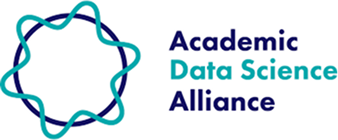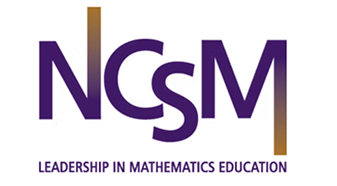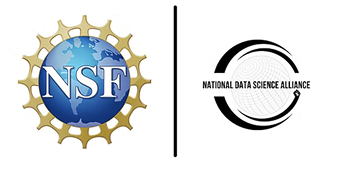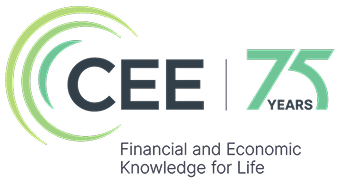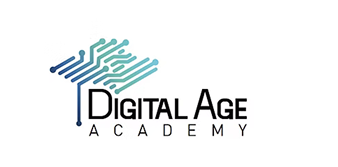Write data stories
Structure effective stories about data when complex jargon and technical ideas are involved.
K–2 Competencies
Describe data represented in very basic ways and begin to link observations.
Demonstrate the ability to utilize simple questions to spark interest in a story conveyed by data, and effectively illustrate the data's narrative through visual representations such as pictographs or charts based on student responses. e.g., utilizing smile face stickers to answer "do you like rain or sun more?"
Classroom resources
Data Science Starter Kit Module 5: Telling the Story - Visualization and Communication
Welcome to the culminating skill of data science—communicating your findings effectively so others can understand and act on them! This module focuses on how to create clear visualizations and compelling narratives that make data accessible and meaningful to different audiences.🔗
Visualization and Communication isn’t about creating fancy graphics or impressive presentations. It’s about developing the empathy and clarity to think, “How can I help others understand what this data means and why it matters to them?” The best data science in the world is useless if it can’t be understood and applied by the people who need it.
3–5 Competencies
Describe the data clearly by identifying any trends or patterns found using descriptive language and terms such as “most,” “least,” “greater than,” “less than,” and “equal to."
When describing the data, decide whether any claim made about the data makes sense.
Find ways to generate interest in the story by crafting a hook that captivates the audience, then supporting it with data examples that reveal the narrative the data conveys.
Classroom resources
Data Science Starter Kit Module 5: Telling the Story - Visualization and Communication
Welcome to the culminating skill of data science—communicating your findings effectively so others can understand and act on them! This module focuses on how to create clear visualizations and compelling narratives that make data accessible and meaningful to different audiences.🔗
Visualization and Communication isn’t about creating fancy graphics or impressive presentations. It’s about developing the empathy and clarity to think, “How can I help others understand what this data means and why it matters to them?” The best data science in the world is useless if it can’t be understood and applied by the people who need it.
6–8 Competencies
Explain what the data reveals and whether it supports or contradicts any claims initially made.
Create a visualization based on a 3-5 sentence narrative describing a particular environmental phenomenon involving multiple variables.
Create a provocative question, support that question with relevant data, and reveal the story the data is telling, including connections with real-life scenarios and potential solutions.
Classroom resources
Biodiversity Snapshot by DataClassroom
The purpose of this lesson is to help students create effective data visualizations to communicate conservation stories and understand how Indigenous communities use data science to protect biodiversity. Students will analyze camera trap data from the Peruvian Amazon, create multiple visualization types to reveal biodiversity patterns, and craft data stories that connect scientific findings to real-world conservation efforts and cultural preservation.
Middle School Drought Analysis
The purpose of this lesson is to develop students' data literacy skills through analyzing real drought data from their state or region. Students will explore climate patterns, create visualizations, draw evidence-based conclusions, and communicate findings effectively while learning to evaluate data sources, identify patterns, and understand the ethical implications of data analysis.
Data Science Starter Kit Module 5: Telling the Story - Visualization and Communication
Welcome to the culminating skill of data science—communicating your findings effectively so others can understand and act on them! This module focuses on how to create clear visualizations and compelling narratives that make data accessible and meaningful to different audiences.🔗
Visualization and Communication isn’t about creating fancy graphics or impressive presentations. It’s about developing the empathy and clarity to think, “How can I help others understand what this data means and why it matters to them?” The best data science in the world is useless if it can’t be understood and applied by the people who need it.
9–10 Competencies
Explain how the data directly supports or contradicts any claims made about it while also being open about limitations such as sample size or external factors that may influence results, and anticipate potential counterarguments.
Support claims by citing expert opinions or research studies that corroborate the data.
Use data to explain trends and predict future outcomes based on those trends.
Classroom resources
Who is the Data MVP of the NBA? by DataClassroom
The purpose of this lesson is to help students create sophisticated data visualizations to analyze NBA player performance while critically examining how data-driven arguments compare to human judgment in decision-making contexts. Students will use FiveThirtyEight's RAPTOR statistics to build evidence-based cases for MVP candidates, then evaluate the limitations of data storytelling when complex human factors influence real-world decisions
Data Science Starter Kit Module 5: Telling the Story - Visualization and Communication
Welcome to the culminating skill of data science—communicating your findings effectively so others can understand and act on them! This module focuses on how to create clear visualizations and compelling narratives that make data accessible and meaningful to different audiences.🔗
Visualization and Communication isn’t about creating fancy graphics or impressive presentations. It’s about developing the empathy and clarity to think, “How can I help others understand what this data means and why it matters to them?” The best data science in the world is useless if it can’t be understood and applied by the people who need it.
11–12 Competencies
Make and defend arguments using key features from a data visualization.
Clearly define the claim by making it specific, measurable, and actionable.
Ensure the data directly addresses the claim being defended.
Address potential confounding variables and factors in claim-making, and if possible, demonstrate how the data controls for those confounding variables and factors.
Discuss a claim's broader implications in writing, including societal effects. e.g., a graph showing declining crime might ignore rising cybercrime
Classroom resources
Too Old to Mango? by DataClassroom
The purpose of this lesson is to help students master professional-level data visualization and communication skills by analyzing agricultural research data on mango tree productivity across different ages. Students will create publication-quality visualizations, conduct statistical analysis, and communicate findings to diverse stakeholders in ways that can influence agricultural policy, economic decisions, and global food security strategies.
Data Science Starter Kit Module 5: Telling the Story - Visualization and Communication
Welcome to the culminating skill of data science—communicating your findings effectively so others can understand and act on them! This module focuses on how to create clear visualizations and compelling narratives that make data accessible and meaningful to different audiences.🔗
Visualization and Communication isn’t about creating fancy graphics or impressive presentations. It’s about developing the empathy and clarity to think, “How can I help others understand what this data means and why it matters to them?” The best data science in the world is useless if it can’t be understood and applied by the people who need it.
Advanced Competencies
Use complex visualizations like multivariable graphs, scatter plots, heat maps, or interactive dashboards to present data clearly. Then, develop a research paper or presentation to explain the background, methodology, and context of the data, using visualizations to provide evidence of their findings and conclusions.
Classroom resources
Support other teachers by sharing a resource
Do you have a lesson plan, video, or tip that could help others teaching this topic?
Share feedback on the Learning Progressions
Your feedback helps us improve these progressions for teachers around the world. Thank you!
Share feedback on the Learning Progressions
Your feedback helps us improve these progressions for teachers around the world. Thank you!
Share a classroom resource
Suggesting a resource helps students around the world learn essential data science skills.









.png)

